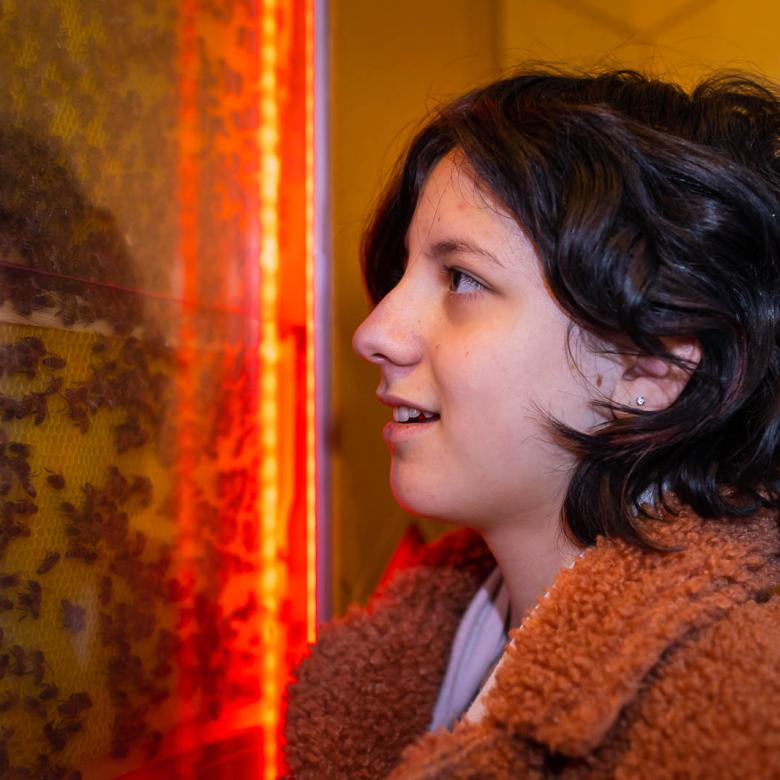About
Located in Q Lab, Questacon’s beehive lets you get up close and personal with more than 10,000 of nature’s hardest workers.
This living exhibit is the new home for a colony of local European honey bees removed from a nearby tree for public safety reasons. The bees were initially relocated to southern New South Wales while the installation was built using recycled materials.
The busy bees are able to enter and exit their new home through a tunnel that leads to the outside of the building. Footage of the bees’ activity at the landing pad just outside the tunnel is streamed live to a monitor at the exhibit.
Meet the bees
A European honey bee colony is made up of a queen, drones and worker bees. Each type of bee performs a different job.
Almost all the bees in the hive are workers. They gather nectar from flowers and use it to make honey. They also care for young bees and keep the hive neat and tidy.
The queen is the largest bee and is the mother of every other bee in the hive. She can lay up to 1,500 eggs a day.
Drones are the only male bees in the hive. Their only job is to wait for a new queen to be born so they can mate.
Bee communications
We’ve all heard bees buzzing, and a bee hive can be quite noisy. But among the ‘huzzle and buzzle’, bees communicate using vibrations, which can’t easily be heard by us humans.
We’ve installed speakers in the Questacon gallery, so you can hear how bees talk to each other. The signals were recorded with an accelerometer, a device that measures vibrations in the hive. Listen to worker bees ‘whoop’ when they bump into each other. Follow the ‘quacking’ of queens still stuck in their cells, and be impressed by the superb ‘tooting’ of a queen bee that has just emerged.
Temperature control: Bee-style
Bees are very sensitive to the surrounding temperature. Ideally, bees like their hive to be around 34 to 36 °C.
Hive temperature control is all about teamwork. To keep warm in winter, the bees huddle together. To cool down in summer, the bees move their wings like a fan to create a breeze and spit water around the hive. When the water evaporates it cools the hive. Amazing, isn’t it?
We have installed 3 thermometers: one inside our beehive, one in the gallery space, and one outside the building. You can track the temperatures of the 3 locations live to see how well the bees do their job!


